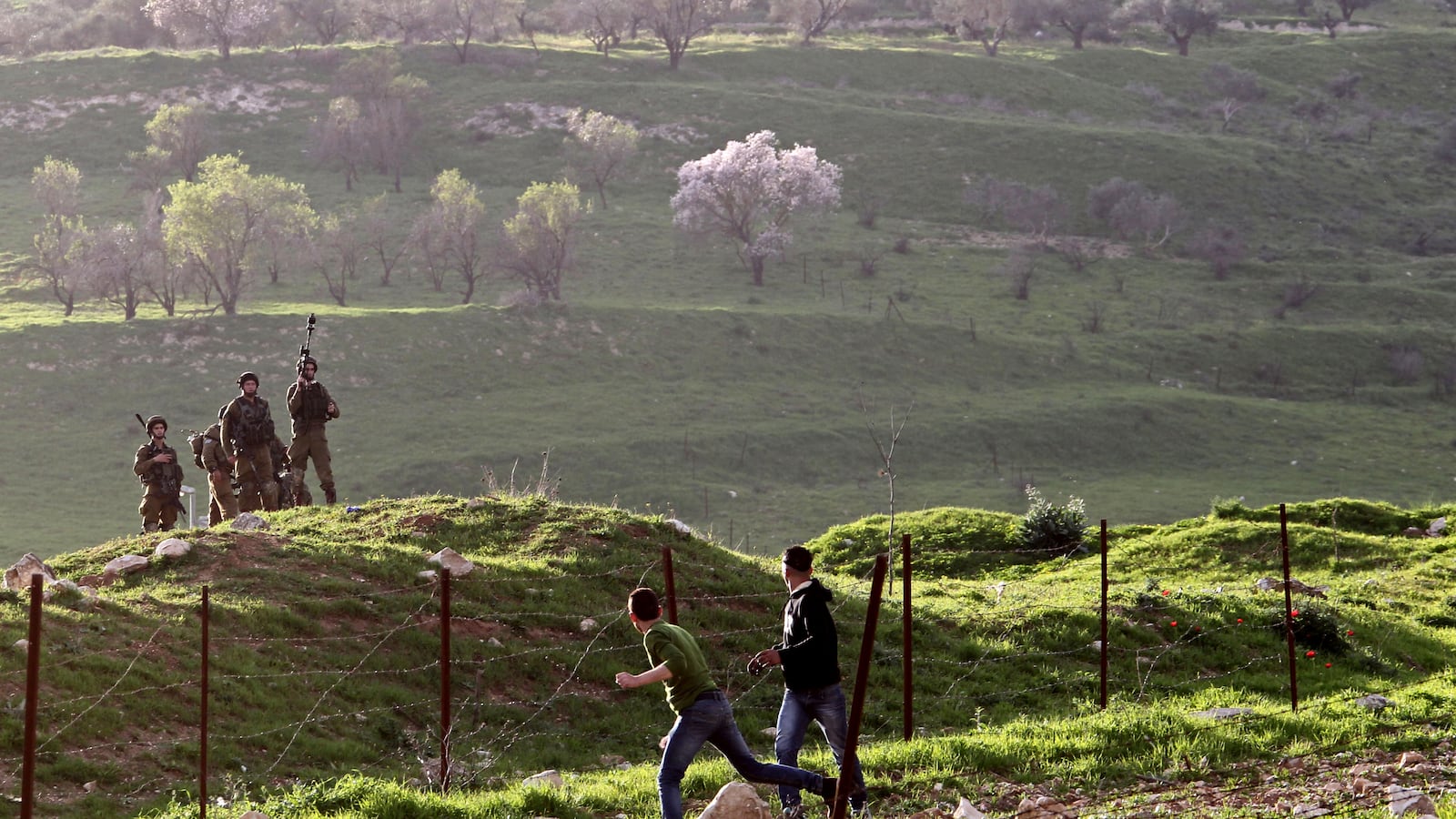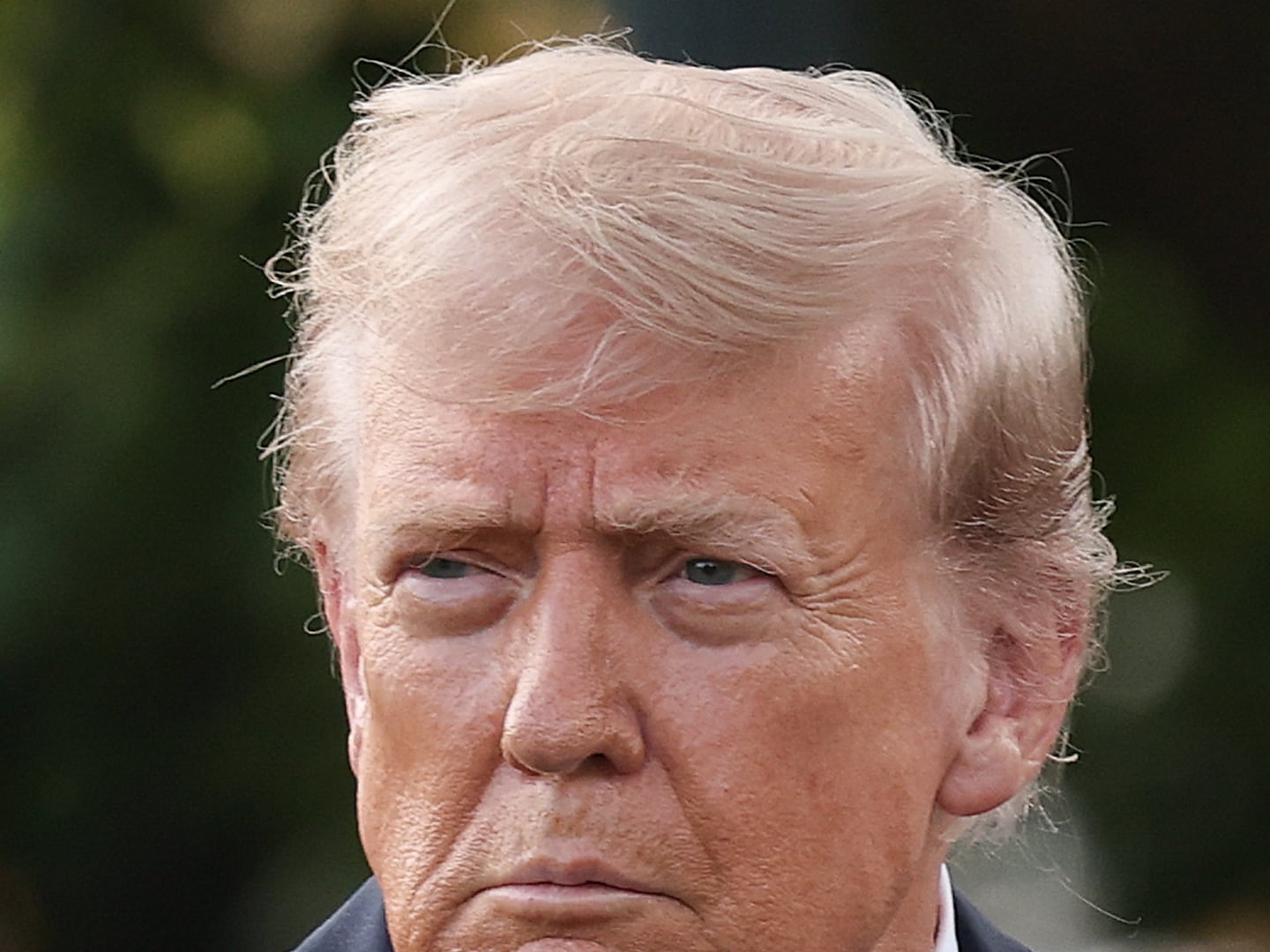
Escalating talk of a third intifada reached fever pitch on Saturday over the death of Palestinian prisoner, Arafat Jaradat, only hours after he was interrogated by the Shin Bet secret service. But in a surprising admission by Avi Dichter, who served as Shin Bet chief during the second intifada and then as Public Security Minister, he warned that Israel’s tactical response will likely be a determining factor over whether the current unrest explodes into a full-fledged uprising.
On Sunday, as protests swept the West Bank and Palestinian leaders accused Israel of torturing Jaradat to death, thousands of Palestinian prisoners joined four of their comrades already on hunger strike, though only for a day. Masked gunmen of the Al-Aqsa Martyrs’ Brigades made a rare public appearance at Jaradat’s funeral on Monday to fire a salute over the grave, while they issued a proclamation threatening to avenge his death and warned that it would trigger—yes—“a third intifada.”
“No intifada—not the first, and not the second—broke out because of hunger strikes by prisoners, even when they were much more widespread,” Dichter told Israel Radio. He said the accepted version of how the previous uprisings began—in 1987 with a car crash in Gaza, and in 2000 with protests following Ariel Sharon’s visit to the Temple Mount—ignored the role played by Israeli forces in inflaming an already tense situation.

“In the first intifada, it wasn’t the traffic accident at the Ashdod junction, but the 17 people killed in the Jabaliya refugee camp at the funeral of the dead from Ashdod junction. The second intifada erupted because of the people killed on the Temple Mount. So the trigger for the two intifadas that we experienced was the trigger of the people being killed,” said Dichter.
Israel’s easy resort to lethal force—and the resulting fury at the deaths of unarmed Palestinians—has plagued public policy for decades. In 1976, six Israeli Arab farmers were killed on “Land Day.” In 1996, fifty-four Palestinians and fourteen Israeli soldiers were killed in riots that erupted over the opening of the Temple Mount tunnels. Thirty-six Palestinians and Israeli Arabs were killed by Israeli police and troops in the first three days of the second intifada. The 2001 Mitchell Report notes: “the decision of the Israeli police on 29 September to use lethal means against the Palestinian demonstrators; and the subsequent failure… of either party to exercise restraint.”
“We are not a lone player. We are very central,” said Dichter. “What does it depend on? The way in which we respond. When there are Friday prayers at the Temple Mount, or on other sensitive days, there is no doubt that an incorrect response by the security forces that causes fatalities among the crowds, and certainly on the Temple Mount, is a very serious event that can cause severe escalation up to an intifada.”
The events of September 29, 2000 have been the subject of endless discussion and varying interpretations. A senior Israeli official on duty at the scene told me that the situation spiraled out of control due to a series of mishaps that began when Jerusalem Police Commander, Yair Yitzhaki, was knocked unconscious by a rock hurled from a crowd as he walked across the Al-Aqsa plaza consult with Muslim leaders. Seconds later, the senior Border Police officer who should then have assumed command, suffered a broken hand and was incapacitated when he was hit by another rock. With both commanders down and the crowd advancing on them, the border police opened fire, killing four Palestinians. The killings sparked protests among Israeli Arab communities in the Galilee, where Israeli police also opened fire and killed more people.
The official told me that Israeli security tactics have changed since then. Dichter also said the lessons of the second intifada have been taken to heart.
“The security services have learned from experience,” he said. “We realized in the year 2000 what procedures should have been different on the Temple Mount, and so all the incidents today on the Temple Mount are managed completely differently by the Israel Police and the other security forces.”
Even The Jerusalem Post, not known for its soft line on Israeli security, urged restraint. “Our security forces, which have been tasked with containing the violence and preventing demonstrators from blocking major roads, must also avoid using extreme force and refrain from unnecessary confrontations,” the Post said in an editorial on Feb 26.
But a statement issued by the Palestinian cabinet after a meeting in Ramallah the same day did not suggest that any lessons had been learned. The cabinet “condemned the use of live fire by occupation forces against protestors, which has caused several grave injuries in Nablus, Ramallah, and Bethlehem, in addition to dozens of injuries by rubber-coated steel bullets and teargas inhalation.”






